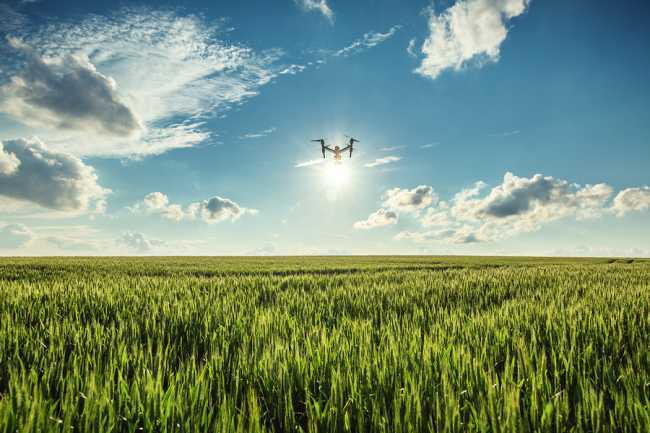Drones are useful for drone seeding, which involves flying over a given terrain with an innovative dispersal method to plant-specific species in designated regions. It is a seeding application to agricultural fields using aircraft. Drones, helicopters, and planes are among the aircraft utilized for aerial seeding.
Drone seeding is a technique for dispersing legumes, vegetable seeds, and grass seeds. The technology can decrease erosion and fire and grow crops in inaccessible regions. Sowing is a quick, efficient method with a high success rate. If done correctly, the drone will have data on soil hardness.
It will be able to modify the pressure used to fire the seed pods that penetrate the soil efficiently. Depending on the drone type and make, you may seed acres of land in hours. The requirement for additional laborers decreases as a result. You may also keep your farmers safe by using drones in difficult-to-reach places.
Drone Seeding History
The concept of drone seeding has a long history, dating back to 1931 in Ohio, United States of America. In 1947, seeding was done on 100 acres of grassland near Oregon and 1000 acres of land in Port Orford, Oregon.
Due to rapid and increased deforestation, drone seeding helped the forest land recover by 1930. People can use it in difficult-to-reach hilly areas, deep forests, and farmland. After WWII, veteran pilots were the first to use seeding for commercial purposes. However, recently, GPS-based navigation, site mapping, turbo engines, and droneseed technology have advanced.
What Is the Droneseed Process?
Drone seeding follows a particular process to carry out the work effectively and successfully. The following is a brief explanation of how it works:
- Low-flying drones disseminate seed balls or seed pellets in a designated region, which fall to the ground with the help of the coating.
- Instead of dispersing in the wind, the coating provides the necessary weight for seeds to fall on a specific area.
- These pellets will grow and provide nutrients when there is enough rain.
- According to experts, the timing of seeding is crucial and must be considered for the plantation to succeed.
What Experts Should Think About Drone Seeding
#1. The Kinds of Seeds the Drone Can Manage
Tree planting drones can manage a lot of seed types. Drones seed various crops, including soybeans, buckwheat, oats, maize, hairy vetch, winter wheat, Sudan grass, and perennial rye.
However, the crops or species that drone agriculture can disseminate in the area must be:
- Native to the site.
- And have seeds of an acceptable size for making seed balls and a greater survival rate.
#2. The Soil Condition
Proper seeding necessitates appropriate soil moisture conditions. Moist soil with a moisture content of 0.5-1 inch is ideal for aerial seeding. It’s critical for farmers to keep the soil moist during the first 7-10 days after seeding.
The surface soil must be moist and flaky to allow the seed to settle into the surface and create good contact with the soil. It’s best if the surface is loose and rough or has cracks or residues. Because of the residual layer, the seed has a better chance of getting appropriate soil contact and landing in moist places, conserving surface moisture for successful seed germination. A flat, complex, and dry soil surface is unsuitable for aerial seeding.
Fast germination of seed, accessible introduction to soil, and prevention of seed resting on the soil surface are all reasons why a wet environment is necessary. The majority of seeds on the soil surface are vulnerable to predation, wind, insects, and animals. As a result, germination will be easier in friable damp circumstances with a loose, rough surface, residue coating, or broken surface. As a result, if aerial seeding is successful, it must be done at the right time.
#3. Timing
The optimal time for drone farming is when the soil is damp for at least 7-10 days. While drilling is more efficient and ensures seeding, aerial seeding is faster and covers a more extensive area. Aerial seeding can take longer to drill than traditional seeding methods.
Drill sowing requires fewer seeds to obtain optimal concentration. On the other hand, the aerial seeding rate prediction is about 50 percent higher. Unfortunately, the increased seeding rate wastes some resources, but it accomplishes the same outcomes as traditional drilling.
Advantages of Drone Farming
For many farmers, while highly effective, the conventional seeding approach is labor-intensive. There’s also the issue of time, field coverage, and getting to remote locations.
Thanks to drone farming, farmers and agricultural specialists may now settle with drone farming to conduct seeding operations over fields considerably more quickly. Utilizing tree-planting drones have several advantages, including the following:
- It can be beneficial in inaccessible areas, i.e. steep slopes, fragmented, or disconnected with no forest paths, and where the standard plantation is challenging. Experts utilize it for drone monitoring.
- Seed germination and growth require little supervision after spreading. It is known as the “fire and forgets” planting method.
- It removes the need for plowing and digging holes in the soil, and because soil, nutrients, and microbes already surround the seeds, they do not need to be planted.
- The clay shells of these pellets protect them against birds, ants, mice, and other rodents.
- It will create jobs for the local population, particularly women who can prepare the seed balls.
- It can help mitigate droughts through cloud seeding, according to experts.
Takeaway
Drone seeding has numerous advantages. Aerial seeding is often quick and straightforward, allowing a farmer to create an intense cover crop stand months before the cash crop harvest.
The ZenaDrone 1000 autonomous flying, which provides effective surveillance, inspection, and drone monitoring, exemplifies modern drone technological advancement. ZenaDrone has evolved into a multi-functional industrial smart drone with artificial intelligence and machine learning software.
ZenaDrone 1000 assists businesses, farmers, and agricultural professionals worldwide streamline their seeding processes and operations in a cost-effective, easy, and sustainable manner.

